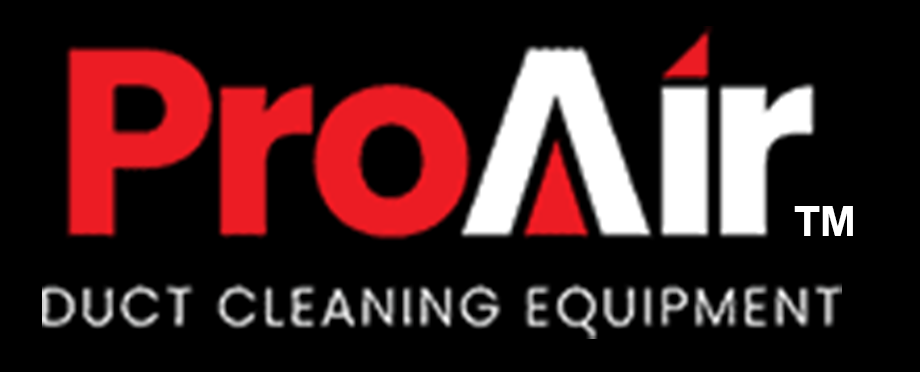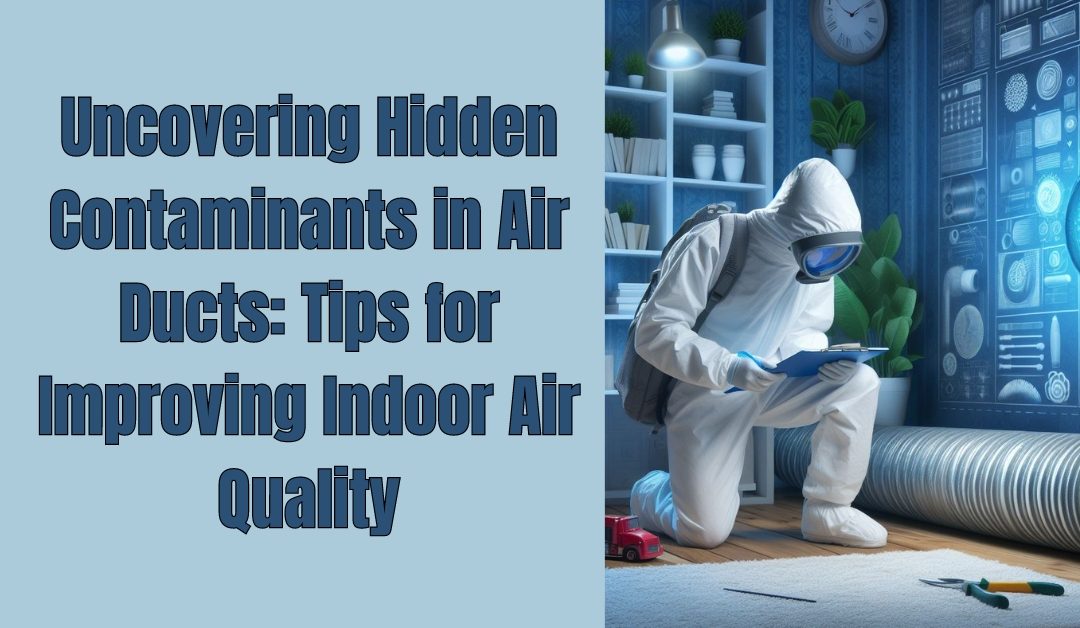Improving Indoor Air Quality by Revealing Hidden Contaminants in Air Ducts
In the hidden world of your home’s air ducts, unsung heroes quietly circulate air flow throughout your living space and ensure your HVAC system delivers that perfect temperature you crave. Yet there is an invisible lurking threat: contaminants. Yes, that airborne particle that finds a home in the depths of your air duct silently impacts your indoor air quality and leads to indoor air pollution.
Contaminants accumulate in clean ducts over time with the absence of regular cleaning, which has adverse health effects because of dust, dirt, mold spores, pollen, fungal spores, and other allergens that flourish in your HVAC system.
In the battle for clean indoor environmental conditions, air ducts emerge as sites for household dust, which carries airborne fungi due to fungal spores, dust mites, biological particles with microbial growth, and other organic compounds. It’s time to heed the warning signs and take measures to deal with duct contamination.
Are you ready to breathe easier?
Then, read this article to reclaim your indoor air quality.
Exploring the contaminants lurking in your air ducts
As you bask in the cozy warmth of winter or revel in the refreshing coolness of summer, your air ducts silently perform their duty by circulating air flow. However, the air flow carries large particles with it that can be adverse for you and your family.
From biological particles to inanimate particles, the spectrum of pollutants or contaminants lurking within your ductwork is vast and varied. There are two main types of pollutants:
- Animate Contaminants: Living organisms can have the most significant potential for harm. Bacteria, dust mites, mold spores, and viruses – these microscopic biological particles pose adverse health effects. Bacteria and viruses lurk in the shadows, ready with a list of sick building syndrome symptoms such as shortness of breath and development of skin conditions.
- Inanimate Contaminants: Derived from living organisms, these contaminants manifest in the form of dust, dander, pollen, and plant byproducts. Lung irritants, by nature, these particles induce coughing, sneezing, and watery eyes upon inhalation. For allergy sufferers, the mere presence of these contaminants can unleash sick building syndrome symptoms such as swollen sinuses and excessive itching.
Let’s see the main types of animate and inanimate contaminants that call your air ducts their home:
- Dust and dirt: Dust and dirt linger, silently settling into every nook and cranny, including your air ducts. Dust, born from fabric items and dirt, carried in from the outside world, finds refuge within air conditioning systems and ductwork. Despite your best efforts to maintain a pristine home, these particles find their way into your air duct.
- Mold and organic allergens: As the seasons shift, mold spores and organic compounds, and allergens stealthily infiltrate air ducts. Pollen, hair, and dead skin cells from family members and pets find their way into your ducts, mingling with the mold spores. These organic compounds slowly accumulate, triggering allergic reactions and shortness of breath among household members. And moisture transforms mold into a formidable foe that can be deadly.
Specific contaminants become essential to understand based on situations. When working on construction or maintenance projects, it’s common to encounter everyday contaminants like dust, debris, drywall particles, and mold spores. Even the gradual deterioration of internal pipes and HVAC components can shed debris, lurking within your ductwork until disturbed by the rush of circulating air flow. Swift removal of these hazardous contaminants is essential to safeguarding your indoor air quality.
However, occasionally, you may come across less typical pollutants. Here are some foreign matter types to be aware of:
- Asbestos: The age of the building is a key indicator. Structures built before 1980 should be inspected. Asbestos might be present throughout such buildings.
- Insects or animals: Pay attention to noises or unpleasant smells. While fruit flies or rodents are unlikely to be alive within your air conditioning systems, they could be the cause.
- Motor Vehicles: In certain scenarios, air ducts near bus depots may accumulate black soot. Hospitals may have protocols to briefly shut down roof vents when helicopters land on the helipad, preventing air and debris from being drawn into the HVAC system.
Two of the most insidious contaminants are volatile organic compounds (VOCs) and dust mites, both of which can wreak havoc on our health without us even realizing it:
- Volatile Organic Compounds (VOCs): VOCs, though invisible to the naked eye, are pervasive pollutants emitted by everyday household products and building materials. From cleaning supplies to furniture and electronics, these compounds stealthily infiltrate our indoor air, posing a range of health risks.
Short-term exposure to VOCs can manifest as minor irritations such as eye and throat discomfort, while prolonged exposure has been linked to more severe respiratory and neurological issues, even certain cancers. The alarming reality is that many remain unaware of the silent threat lurking within their homes from the very products intended to enhance our domestic environments.
Combatting VOCs requires improving ventilation, and opting for low-VOC or VOC-free alternatives is a practical strategy to minimize emissions. Moreover, regular air duct cleaning plays a pivotal role in stopping VOC buildup.
- Dust Mites: Despite their size, dust mites are potent allergenic agents thriving within our air ducts. Feeding on dead skin cells and flourishing in warm, humid conditions, these microscopic pests exacerbate respiratory ailments and trigger allergic reactions.
The insidious nature of dust mites lies in their waste, containing allergenic proteins that become airborne particle as your HVAC system circulates air through the air ducts. For allergy and asthma sufferers, this invisible particle deteriorates air quality.
Regular air duct maintenance and household cleanliness defend against the growth of dust mites.
Here is an additional list of contaminants present in daily-use appliances:
- Fireplaces, wood stoves, wood heaters, and wood boilers: These sources release significant pollutants such as carbon monoxide (CO), nitrogen dioxide, and fine particles. Unvented kerosene heaters can result in acid aerosols. Formaldehyde, commonly found in pressed-wood products (including particle board), can cause various health issues, including eye, nose, and throat irritation, wheezing, coughing, fatigue, skin conditions, headaches, nosebleeds, and severe allergic reactions. Formaldehyde levels tend to be higher in warmer months. Good ventilation and allowing time can help dilute and reduce formaldehyde levels.
- Household Cleaning Chemicals and Sprays: Symptoms from fiberglass exposure typically subside after removal or encapsulation. While fiberglass is widely used, it’s essential not to breathe it. Consider alternatives like polyester or sheet foam insulation. Wet spray-applied cellulose insulation (with 30-40% water content) can become moldy in indoor environmental conditions.
Proper personal protective equipment is crucial during installation or maintenance. You should look into disconnected ventilation air ducts and replace ceiling panels if needed. Be cautious with lead and cadmium-containing paint, which can become airborne particle if sanded. Fine particles can circulate through air ducts, settling throughout the house. Inspect walls for leaks, especially in structures without a moisture-resistant barrier between outer metal siding and inner drywall sheeting.
Elevating indoor air quality
Advancements in technology offer a plethora of solutions to remove contaminants and fortify your defenses against future invasions. Let’s delve into the strategies at your disposal to enhance indoor air quality and reclaim the purity of your living spaces:
- Indoor air quality testing: Schedule an indoor air quality test. Under the guidance of duct cleaning service providers and licensed professionals, this assessment sheds light on the concentration levels of various pollutants.
- Harnessing UV light: Harness the power of ultraviolet (UV) light to combat airborne bacteria and pollen. The installation of UV lights strategically positioned beyond intake vents purifies the air streaming into your HVAC system, inhibiting the growth of microorganisms and mold.
- Professional duct cleaning: Venture beyond the surface and delve deep into your ductwork with professional duct cleaning services. Utilizing state-of-the-art equipment, licensed contractors eradicate built-up dirt, dust, and debris, revitalizing your ventilation system and extending its lifespan.
Conclusion
In the quest for pristine indoor air quality, it’s crucial to implement a comprehensive approach that addresses potential sources of contamination and air pollution in every corner of your home. From the bathroom to the garage, each area presents unique challenges and opportunities for safeguarding the health and well-being of occupants.
Our final note is some essential home maintenance tips for clean indoor air:
- Avoid over-purchasing indoor pollutants like cleaning solvents or pesticides. Follow manufacturers’ instructions for proper use and disposal.
- Ensure proper airflow before and after using chemical-emitting products like pressed-wood furniture. Avoid indoor smoking to prevent harmful pollutants.
- In bathrooms, use exhaust fans and monitor moisture levels to prevent mold growth. Choose personal care items and air fresheners with minimal aerosol content. Pay heed to damaged asbestos floor tiles promptly.
- In bedrooms, use humidifiers carefully, clean regularly, and opt for allergen-blocking bedding to minimize dust mites. Air out dry-cleaned clothes, maintain air conditioners and water trays, and replace filters regularly.
- In living areas, select furniture brands with low formaldehyde emissions and maintain carpets to minimize gas emissions and dust mites. Ensure proper ventilation and regular maintenance of fireplaces, gas stoves, and heaters to prevent CO and combustion pollutants.
- In the kitchen, use non-toxic cleaners and exhaust fans to minimize indoor pollutants while cooking. Clean gas stoves and ranges regularly to prevent combustion byproduct buildup. Avoid using them for home heating.
- In the garage, never run engines indoors to prevent CO accumulation. Ventilate when using paints, solvents, or fuels, and store containers outdoors.
- In laundry or utility areas, clean lint filters and ensure proper gas combustion ventilation. Pay attention to ground moisture and leaks to prevent allergen buildup. Regularly inspect asbestos-containing materials and heating systems for CO risks.
We recommend that you ensure regular air duct cleaning and maintenance by investing in our Complete Duct Cleaning System to keep up with your cleaning air duct cleaning schedule.

